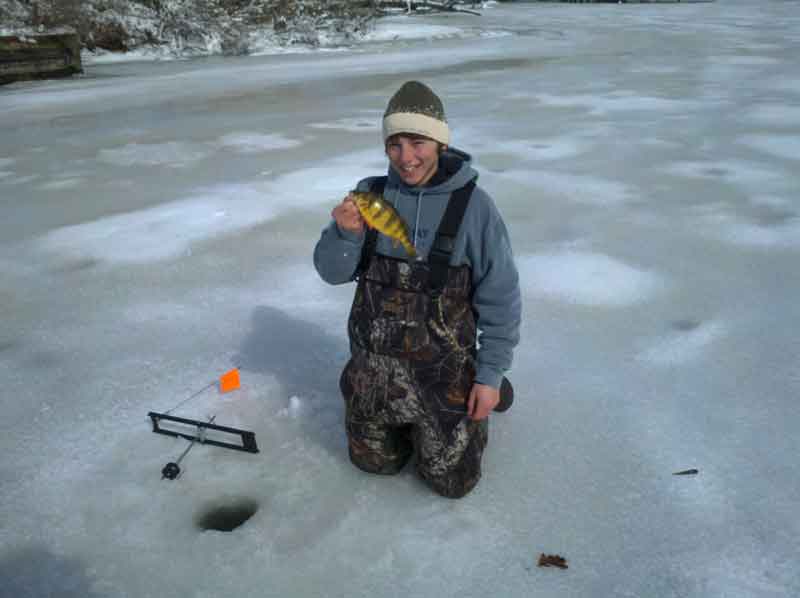Will you get to go ice fishing on a tidal creek or river this winter? Considering how warm it's been recently, it doesn't seem likely. Even during average years since the turn of the century, most of the Chesapeake’s tidal waters don’t freeze up hard enough to fish on (it's only happened a handful of times in the past decade and usually for just a week or two). But sometimes we get a cold snap that turns the water hard enough, and thick enough, for a day or a week of ice adventures – and there’s a possibility that will happen this month, if you're ready to spring into action with short notice. Should you use the exact same tactics as you would when ice fishing on a lake? Not exactly…
- ON LAKES the fish are often structure-oriented, but…
- ON TIDEWATER they’ll usually be in holes deeper than the surroundings, along channel edges, or meandering through coves.
- ON LAKES shiners hooked through the back are usually a top tip-up temptation, but…
- ON TIDEWATER bull minnow hooked through the lips always seem to catch better.
- ON LAKES tiny jigs tipped with mealworms are a top offering, but…
- ON TIDEWATER larger jigs tipped with live bull minnow or grass shrimp tend to draw a lot more hits.
- ON LAKES very light four or even two-pound test line is sometimes necessary to get panfish bites, but…
- ON TIDEWATER you can up-size the line to six or even eight-pound test, without paying a penalty.
- ON LAKES current usually isn’t much of a factor, but…
- ON TIDEWATER it can drag your lines against the edge of the ice, where the line can freeze in place or abrasion can be problematic; check your tip-ups and place them off-center if necessary, to make sure the line stays clear of the edges of your holes.

Tidewater Ice Fishing Safety Alert: On lakes when you see opaque ice you know to avoid it, since it’s aerated and weaker than clear ice. On tidewater, quite often all the ice looks opaque. There is no easy way around this – you need to punch a test-hole before stepping onto the ice, and continue opening them up and checking ice thickness every 10 or 12 feet as you go (unless it’s been outrageously cold and the ice is extremely thick). Remember, four inches is usually considered the minimum for safe ice fishing.
For a more comprehensive look at ice fishing in the Mid-Atlantic region, see our Mid-Atlantic Ice Fishing Spectacular.